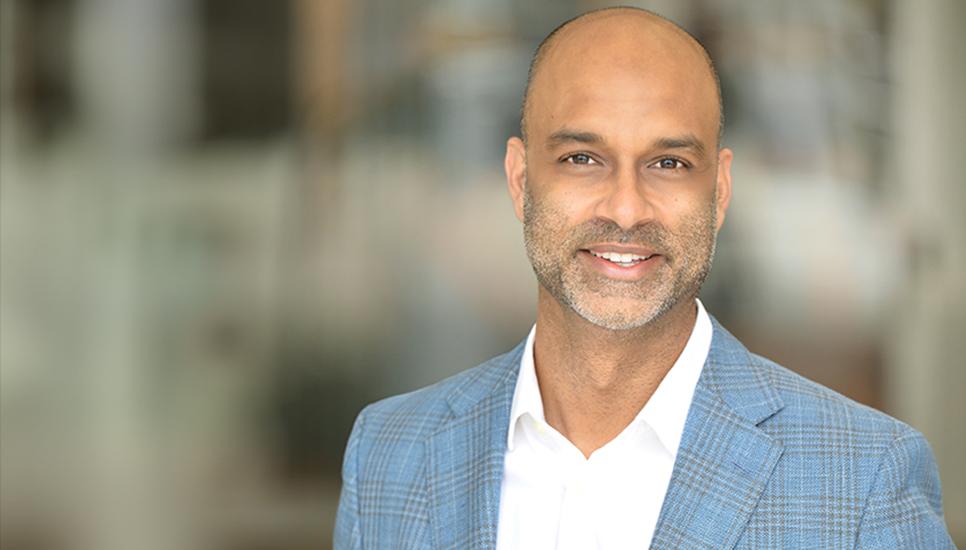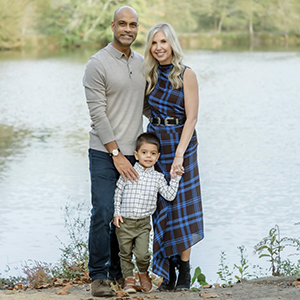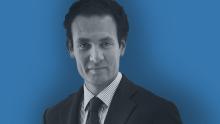Nitesh Sapra: A family business building on the American dream

The son of Indian immigrants, US-born Nitesh Sapra is the very definition of motivation, diligence and achievement. Along with his brother Neil, he oversaw the huge growth of NitNeil Partners, a family firm focused on enhancing underutilised real estate with an impressive portfolio of self-storage units across the southern states.
Founded by his father, Val Sapra, in 1985 as an investment vehicle for his real estate interests while working as a full-time college professor, Nitesh and Neil have expanded the company from a local family business into a national firm by assembling an institutional-grade portfolio of real estate assets and forging strategic financial and operational partnerships.
Now, following a successful ‘once-in-a-lifetime’ liquidity event, the brothers are exploring new investment opportunities and continuing their entrepreneurial journey.
Here, Nitesh talks exclusively about a lifelong interest in real estate, being ahead of the curve in the nascent self-storage asset class and the appeal of closely working with his sibling…
My family’s story is a classic in-search-of-the-American-Dream journey.
Your family’s wealth journey began with your parents emigrating from India to the US. Can you talk about those early days?
My family’s story is a classic in-search-of-the-American-Dream journey. My father left his working-class family in India to try a new life in the United States and ultimately landed an assistant professor position at a historic black college, Alabama A&M University in Huntsville.
Born and raised in Huntsville, I had a really nice upbringing. With our immigrant parents, we lived in a safe and strong community. I had a mix of public and private education and I think that really helped set me up foundationally for success in the future.
I was exposed to real estate at an early age. At the weekends, my dad would throw me and my brother in the back of the truck and we would go look at farmland he was thinking of investing in. He applied his research skillset from academia to business to supplement his income and, from an early age, I thought real estate was really cool. I loved how tangible and visible these assets were, they were something you could touch, feel and look at.

That experience clearly influenced your interest in real estate, leading you to join NitNeil Partners with your brother Neil. Early on, you spotted a gap in the market with self-storage facilities, how did that interest come about?
There was always a desire to continue the entrepreneurship and business story our father started. My brother, Neil, and I both had established our careers within commercial real estate after graduate school for highly reputable firms. Neil was working in private equity and I was working for a large multifamily developer. Since our college days, we would chat over beers how it would be great to one day collaborate in business. It wasn’t until later in our 20s after graduate school and establishing our careers in real estate, that we arrived on a business plan centered around the self-storage asset class.
At around this time of 2007, self-storage was like the Wild West. It was considered a niche, non-institutional grade asset class by most of Wall Street and the sophisticated investor community because it was highly fragmented (REITs controlled less than 10% market share) and the leases were on a month-to-month basis, which suggested instability in tenancy. Furthermore, there was negative sentiment around the asset class because many of the facilities were ‘eyesores’ in communities as they consisted of metal buildings and gravel drives. At the same token, the businesses were hyper efficient from an operations perspective. Still, to this day, it only takes one-to-two full-time people to run a self-storage facility, most of the operating expenses are controlled, and the margins are generally higher than other commercial real estate asset classes. The bottom line is that we identified this asset class as being fundamentally sound however inefficiently valued. Our thesis was that over time consolidation would occur and Wall Street would start to pay attention to it because of its strong fundamentals.
Within our first couple of years of launching into self-storage, we had a dozen assets that we accumulated primarily in two markets, Huntsville, Alabama, where I was born and raised, and Atlanta, Georgia, where we were living and where we started the company. With just those dozen assets, we became a top 50 self-storage player in the country, which was a clear indicator of how fragmented the landscape was.
The asset class performed very well during the Great Financial Crisis. Even though the tenants were on month-to-month leases, the customer demand proved to be very ‘sticky’ and occupancies held up during the recession. Loan delinquencies were extremely low and the REITs stock prices continued to increase because of how well these assets performed. Wall Street started to pay attention.
These days, we’re in an inflationary environment and the month-to-month lease is actually an inflationary hedge, because you can, as an owner, reset pricing in real time. Also, now more than ever, the tenant demand for self-storage is very diverse and is often driven by what we call the ‘Four Ds’… Death, Divorce, Displacement and Density. Transition points in people’s lives which occur in up and down markets create the need for self-storage.
We were always focussed on building an honest business in a steady fashion, just like our father had done.
As a result of your success, you’re rolling out a family office with your brother after a successful and generational wealth-creating exit. You’ve described the whole exit process as unexpected, why so?
We were always, from day one of our entrepreneurial journey, focussed on building an honest business in a steady fashion, just like our father had done.
My brother and I were never in the business of flipping in and out of real estate. We were really focussed on developing a long-term portfolio of income-producing real estate which we’d be very proud of. As we were accomplishing business plans, we were accumulating more assets and building a larger and larger portfolio. Our goal was to make an institutional-grade self-storage portfolio concentrating on markets across the southeast and southwest of the United States, an area which have been experiencing high growth over the past few years and continues to experience a lot of population growth and favourable demographic trends.
The reason I say the sale was unexpected was because we weren’t looking to exit our business in 2021. Coming out of Covid-19, the asset class got a major shot in the arm because of the impact the pandemic had on our way of living and working. It created a lot more demand for our product, because more people were working with working from home and they needed to be more efficient with their square footage. Covid also accelerated movements of households from cities to suburbs as well as towards the Sunbelt. So that shot up demand for self-storage.
Additionally, the massive real estate conglomerate Blackstone acquired a private self-storage portfolio for $1.2 billion in late 2020, and everyone takes notice when big players like that make the move into a new asset class. So, hot on the heels of that transaction, there were a flurry of other sizable institutional deals.
The record size deals in the marketplace, on top of my father’s 80th birthday, made us think that it would be an interesting time to consider an exit. When we got the valuation of our portfolio in 2021, we started to seriously think about harvesting the wealth we had built within our portfolio, which by then consisted of 22 properties across eight states in the Sunbelt. The portfolio had a good mix of cash flowing legacy assets along with trophy new-generation assets that were in lease-up. It was a portfolio that we believed would garner a lot of interest from the top 20 institutional investors in self-storage.
It became clear that we were facing a once-in-a-lifetime liquidity event that would create a generational wealth impact for our family. It took me a minute to really get comfortable with it because we were emotionally attached to these assets, but we decided to run a process with an investment bank that had a track record of institutional-sized transactions within our space. We targeted the top 10-15 institutional buyers of self-storage and identified a way to transact in a very tax efficient way.
We did what’s called an UPREIT transaction, where, in exchange for the portfolio, we received Operating Partnership (OP) units, which mirror a stock, within a public company. This allows us to defer taxes until we redeem out of the OP units, while, receiving a regular quarterly dividend off of the OP unit – effectively preserving the recurring income stream.
We’ve surpassed our wildest dreams financially with portfolio number one.
You are now focusing on developing as an investor and learning to think macro, developing plans to repeat your successful self-storage development strategy in high-growth markets. Is there a pressure to pinpoint that next unique opportunity?
My brother and I are both in our 40s now and we could easily just go into passive investor mode. But we both really like working together, creating high-quality real estate projects, and having an operating business focused on commercial real estate. We feel like we have one more run in us to do another kind of rinse-and-repeat of portfolio number one.
Commercial real estate development and investments, specifically within self-storage, have been a very efficient creator of wealth for us and our families. We really enjoy the industry and have built a lot of friendships. Today, we are doing quite a bit of joint ventures with landowners along with real estate investors for efficiency purposes.
So, with that, I feel like the pressure is off. We’ve surpassed our wildest dreams financially with portfolio number one. Now, I think it’s just about reinvesting in the markets we already have experience with, remaining disciplined with our investment values, and wanting to continue our story as a family business.
The wealth was created over two generations and we now have a responsibility to preserve and grow it for future generations. I am at the infancy of my journey as an “investor” and I am learning that individuals or family offices with a significant amount of wealth can make a dramatic impact in so many different parts of society, whether it be business, non-profits or the arts and culture, I am feeling very empowered by that and just want to continue to learn and grow.






